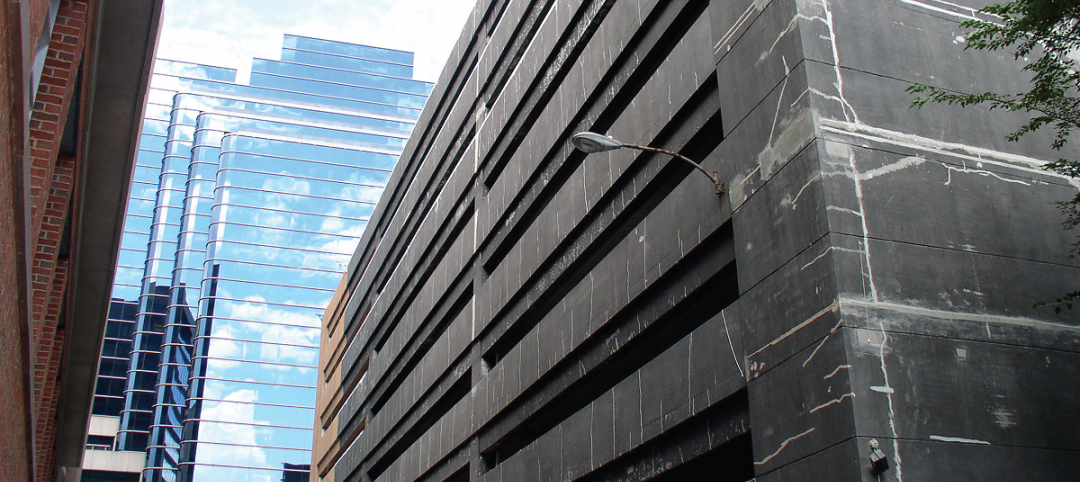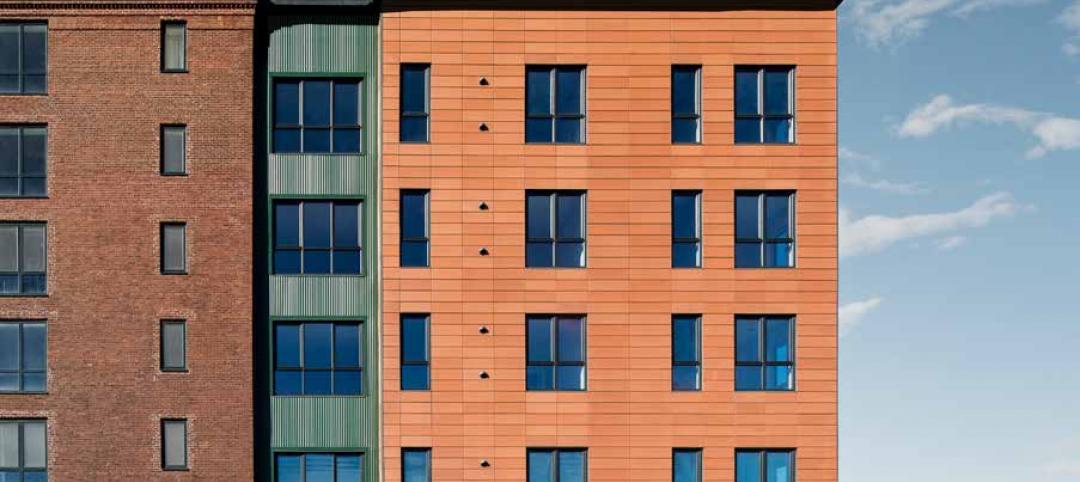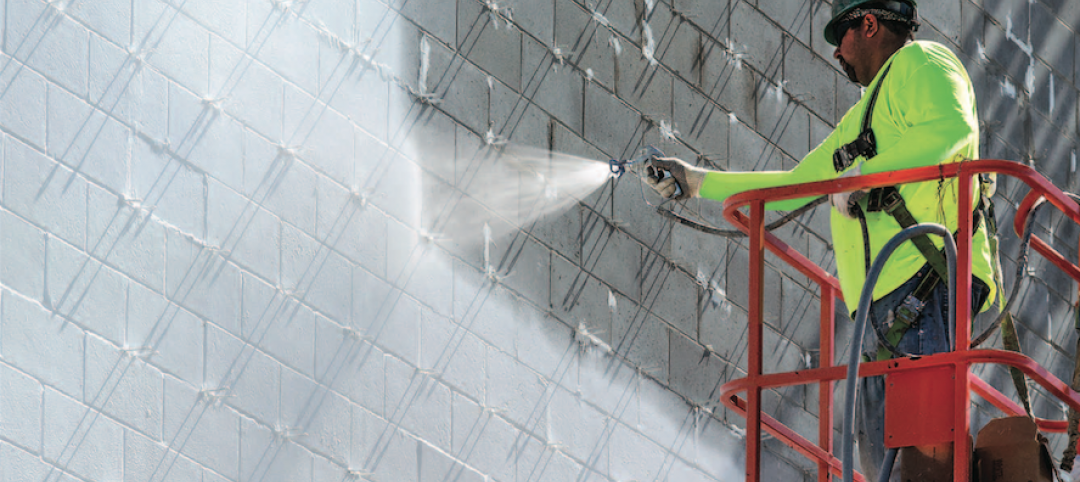Sandwich claddings consist of a panel or shell made of two durable, resilient face sheets and a low-density insulating core, often with a decorative or otherwise attractive face. They can produce an exceptionally strong and sustainable system for enclosures.
Enclosures systems made with these hybrids combine structural rigidity with low weight. Sandwich panels come in numerous composite combinations: structural insulated panels (SIP), insulated metal panels (IMP) including aluminum composites, translucent fiber-reinforced polymer (FRP) assemblies, high-strength and structural glazings, fiber-cement faced products, carbon FRP skins, and a variety of thin-stone claddings.
Learning Objectives:
After reading this article, you should be able to:
• Discuss the differences in design, structural integrity, and insulating capacity between various types of sandwich claddings.
• Describe the basic function of insulated claddings and how they impact building performance, including composite panels faced with stone, metal, and magnesium-oxide cement.
• List two or more cladding materials and technologies that can improve the performance of building enclosures.
• Explain how IMPs, CSIPs, and FRPs can contribute to façade function in composite panels exteriors.
TAKE THIS FREE AIA CES COURSE AT BDCUNIVERSITY.COM
Related Stories
BD+C University Course | Apr 8, 2019
See-through and safe: Innovations in fire-rated glazing [AIA course]
From glass floor systems to large-scale glazing installations, experts share the latest trends, advancements, and applications for fire-rated glazing and fire-resistive barriers in commercial buildings.
BD+C University Course | May 24, 2018
Accommodating movement in building envelope materials [AIA course]
We may think of the building envelope as an inanimate object, but in reality its components can be quite mobile. This AIA CES course is worth 1.0 AIA LU/HSW.
BD+C University Course | May 24, 2018
Building passively [AIA course]
17 tips from our experts on the best way to carry out passive house design and construction for your next multifamily project. This AIA CES course is worth 1.0 AIA LU/HSW.
BD+C University Course | Apr 12, 2018
Meeting the demand for high-efficiency façades [AIA course]
On a national scale, the impetus to improve building energy performance is manifest in the latest and most far-reaching model energy code from the International Code Council.
BD+C University Course | Jan 2, 2018
The art and science of rendering: Visualization that sells architecture [AIA course]
3D artist Ramy Hanna offers guidelines and tricks-of-the-trade to ensure that project artwork is a stunning depiction of the unbuilt space.
BD+C University Course | Aug 23, 2017
AIA course: New steel systems add strength and beauty
Advances in R&D are fostering new forms of structural and aesthetic steel.
Building Enclosure Systems | Jul 26, 2017
Balcony and roof railings and the code: Maintain, repair, or replace? [AIA course]
Lacking familiarity with current requirements, some owners or managers complete a roof or balcony rehabilitation, only to learn after the fact that they need to tear noncompliant railings out of their new roof or terrace and install new ones.
Building Enclosure Systems | Dec 12, 2016
The 100-year enclosure: Strategies for heat-air-moisture control
Should institutional and commercial buildings be built to last 100 years? Why not? There are plenty of examples that have performed well for a century or more.


![Sandwich cladding primer [AIA course] Sandwich cladding primer [AIA course]](/sites/default/files/sandwich%20cladding%20course.jpg)
![See-through and safe: Innovations in fire-rated glazing [AIA course] See-through and safe: Innovations in fire-rated glazing [AIA course]](/sites/default/files/styles/list_big/public/SAFTI%20FIRST%20final%201.jpg?itok=m8pdw17S)


![Meeting the demand for high-efficiency façades [AIA course] Meeting the demand for high-efficiency façades [AIA course]](/sites/default/files/styles/list_big/public/AIA_BDC1217.jpg?itok=SOjPFpxR)








